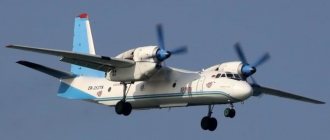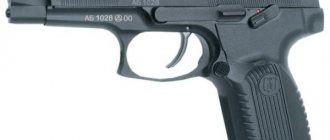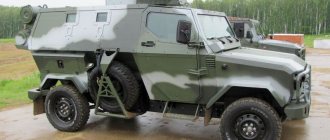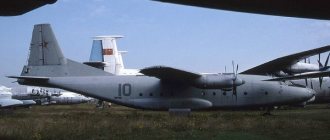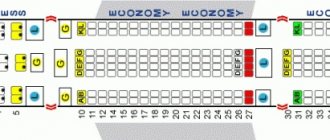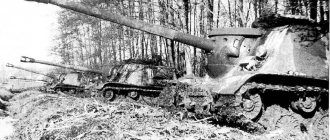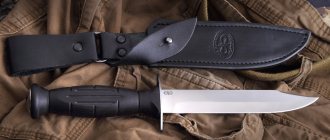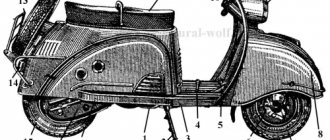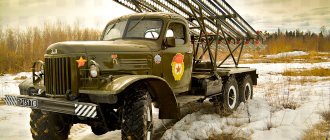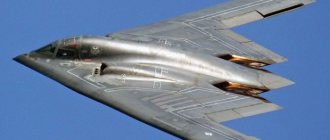TASS DOSSIER. On September 19, 2020, a MiG-31 fighter-interceptor, flying without ammunition, crashed in a forest near the city of Kulebaki (Nizhny Novgorod region). Two pilots successfully ejected and were promptly evacuated by search and rescue service specialists; their lives are not in danger. According to preliminary data from the Russian Ministry of Defense, the cause of the accident was a technical malfunction.
The MiG-31 (according to NATO codification - Foxhound, from English "hound") is a two-seat supersonic all-weather long-range fighter-interceptor. The first Soviet fourth generation combat aircraft. Developed in the 1970s by the team of the Separate Design Bureau of Plant 155 (now JSC RSK MiG) under the leadership of chief designer Gleb Lozino-Lozinsky.
The first flight of the MiG-31 took place on September 16, 1975, the prototype was lifted into the air by the chief pilot of the plant. Mikoyan Alexander Fedotov. The aircraft was put into service on May 6, 1981. It was produced in 1975-1994 at the aircraft in Gorky (now Nizhny Novgorod), a total of 519 units were built. Currently, aircraft of this type are in service with the Aerospace Forces (VKS) of the Russian Federation and the Air Defense Forces of the Republic of Kazakhstan. In the early 1990s, Syria, Libya and China showed interest in purchasing the aircraft, but no contracts were signed.
In 2012, the Russian Air Force (VVS, now part of the VKS) had 252 MiG-31s in service, with 80% of the fleet in need of repair. In 2013, the number of combat-ready aircraft, according to Alexander Zelin, who then held the position of Commander-in-Chief of the Air Force, was about 190 aircraft. Newer data have not been published.
History of creation
The creation of the new interceptor-fighter MiG-31 began in the late 60s at the Design Bureau named after. Mikoyan. The chief designer at the first stages of aircraft design was A. A. Chumachenko. Later he was replaced in the position by G. E. Lozinsky. Having received a position in the development of Buran, Gleb Evgenievich was replaced by Konstantin Konstantinovich Vasilchenko.
During development, it was planned to significantly increase the aircraft's combat capabilities using the latest electronic equipment, such as phased passive array radar. The construction of the MiG-31 was carried out on the basis of the MiG-25 aircraft, but assumed a crew capacity of two people - a navigator and a pilot, the seats for which were located in the fighter in a “tandem” configuration. The first test flight of the new MiG-31 was made by test pilot A.V. Fedotov on September 16, 1975. Full tests of the fighter's running and combat capabilities began on May 22. 1976 and ended at the end of 1980.
The MiG-31 with R-33 class missiles was adopted on May 6, 1981.
The weapon control system of the MiG-31 aircraft is based on a pulse-Doppler radar with a passive phased array antenna. This aircraft became the first fighter on the planet equipped with PFAR, and remained the only production model from 1981 to 2000 until the Rafal entered service. The MiG-31 is the only interceptor capable of independently launching long-range missiles. The fighter is also capable of intercepting objects moving at speeds over 700 km/h.
The chemical composition of the aircraft body is 50% steel, 33% aluminum alloys and 16% titanium.
MiG-31 engines
The aircraft is equipped with modular D-30F6 engines, developed on the basis of the civilian D-30, which was equipped in the Tu-134 (1967) with a nozzle and afterburner. The engine's afterburner uses the "fire track" fuel injection method. When testing engines, vibration combustion was noticed inside the afterburner. To eliminate the problem, a fifth combined manifold was installed. The engine is made of nickel, iron and titanium alloys. Dry engine weight – 2416 kg.
MiG-31 airborne radar system
The MiG-31 fighter is equipped with electronic warfare devices in the infrared and radar ranges. The aircraft is ready to carry out combat missions with the support of an automated ground-based digital control system (ACS Rubezh). The system can provide coordination support with target guidance and provision of coordinates simultaneously with 4 aircraft, while the distance between fighters can reach up to 200 km. The MiG-31 is a one-of-a-kind aircraft that can easily intercept low-flying small-sized cruise missiles. Such capabilities make the MiG-31 not an ordinary interceptor, but a permanent combat unit in service at Air Force and Air Defense headquarters.
Range of flight
The MiG-31 is equipped with four missiles and two drop tanks, dropping missiles halfway and drop tanks at the end of their depletion, and is capable of flying a distance of 3000 km in 3 hours 38 minutes.
Duration and range of flight with the secondary battery retracted, without drop tanks and missiles:
- not including missiles, 2480 km – range, 2 hours 44 minutes. – duration;
- 4 missiles launched halfway, 2400 km - range, 2 hours 35 minutes. – duration;
- 4 missiles, 2240 km – range, 2 hours 26 minutes. – duration.
MiG-31 modifications
After the release of the first MiG-31, various modifications of the fighter were made:
- MiG-31 B - a production aircraft equipped with an in-flight refueling system, which entered service in 1990;
- Mig-31 BS - upgraded to MiG-31B, not including in-flight refueling boom;
- MiG-31BM is a modernized model of 1998, a modern fighter designed specifically for the Russian Air Force. By 2020, it is planned to improve radar in terms of detecting a target range of up to 320 km and simultaneously tracking up to 10 aircraft;
- MiG-31D is an experimental model that can carry 79M6 Kontakt anti-satellite missiles;
- MiG-31I is a fighter that can launch small spacecraft;
- MiG-31M - modernization of the 1993 aircraft with enhanced radar, avionics and weapons;
- MiG-31F is a universal front-line fighter-interceptor designed to destroy ground targets (a radically new configuration);
- MiG-31 FE - export model of the MiG-31BM fighter;
- MiG-31E – export aircraft with lightweight avionics;
- The MiG-31DZ is a production aircraft that is equipped with an in-flight refueling system (it differs from the MiG-31B in the location of the refueling boom and some differences in the cabin structure);
- MiG-31BSM is a modernized fighter of 2014 based on the MiG-31BS without an in-flight refueling boom.
Aircraft capabilities
The main threat to the world comes from NATO carrier strike groups carrying American Tomahawk cruise missiles to the shores of any region of the planet. These low-flying targets (2 m - 5 m above the surface of the sea and land) are inaccessible to the anti-missile defense system, but they are within the capabilities of the MiG-31BM, equipped with equipment with visibility in the upper and lower hemisphere. Having become all-seeing and multifunctional, the interceptor tenaciously keeps 24 objects on its radars. Carrying countless weapons (air-to-air, air-to-sea, air-to-ground missiles) weighing up to 9 tons, the aircraft is ready to hit up to 6 of them simultaneously. The fighter intercepts hypersonic targets up to Mach 6.
Good interaction with air defense (air defense) anti-aircraft missile systems is another important advantage of this interceptor. In addition to fighting objects on the ground, on the water and in the air, the Mig-31BM can become a coordination command post (CCP) for the rest of the group’s aircraft with low-power radars.
The current capabilities of our MiG are the guidance of missiles fired from other fighters, which, in radio silence mode, have approached within missile launch range. As a result, the group’s work becomes more effective
It is important to note once again that only the MiG-31 is capable of defeating low-flying Tomahawk or ALCM missiles, invisible on long-range air defense radars, and on the first try. It was these missiles from overseas maniacs from the Pentagon that destroyed life in Iraq and Libya; these countries did not have Russian interceptors in their weapons
Operation of the MiG-31
The aircraft were first adopted for air defense service in 1980. And in 1981, their serial production began in Gorky. In the first series, 2 aircraft were produced, in the second - 3, in the third - 6. All were intended for flight testing. New fighter-interceptors entered air defense service in 1983. These models were stationed at military bases in Pravdinsk and Savaleisk. The MiG-31 replaced the outdated Tu-128 and Su-15.
In September 1984, new interceptors arrived at military bases in the Far East - about. Sakhalin (Sokol airfield).
Serial production of the MiG-31 ceased in 1994. During this time, more than 500 combat units were produced.
MiG-31 aircraft were used during the second Chechen war over the airspace of the Chechen Republic.
Currently, the MiG-31BM fighter-interceptors that are in service are being modernized; the first two rolled off the assembly line in 2008. In the same year, state flight tests of the modernized aircraft ended. According to the leadership of the country's Armed Forces, 60 Mig-31s are planned to be upgraded to the BM version, 40 to the DZ and BS modifications, 150 units. will be decommissioned.
In August 2014, after visiting an aircraft manufacturing plant in Nizhny Novgorod, Russian Deputy Prime Minister Dmitry Rogozin received a proposal to resume production of the legendary fighter.
Aircraft prospects
Taking into account the unique flight characteristics and combat capabilities of the MiG-31, work continues on its further modernization. This is mainly due to the improvement of on-board equipment and electronics, as well as engine capabilities. The aerodynamics of the aircraft, combined with the materials from which the aircraft was made, proved to be a distinct advantage even over later fighter aircraft designs. Some characteristics of the Mig-31 remain unsurpassed to this day. In the near future, it is planned to upgrade 60 MIG 31 fighters to the BM level, and plans to resume production of the Mig-31 are being considered in government circles and the Russian State Duma.
Accidents and disasters of the MiG-31
- 09/20/1979, Akhtubinsk airfield - engine fire due to fuel leak. The plane is completely destroyed. The crew, consisting of a pilot and navigator, ejected.
- 1984, Sokol airfield (Sakhalin) - two accidents. The first caused the death of the crew, during the second - a successful ejection at the airfield.
- 20.12. 1988, Semipalatinsk airfield - fire in the left engine and unsuccessful landing in difficult weather conditions. Death of the entire crew.
- 09/26/1990, Monchegorsk - disaster after takeoff with the death of the crew.
- 07/12/1996, Komsomolsky airfield - during landing of an aircraft with the engine turned off, a collision occurred with a ground navigation system. The pilot died during the ejection.
- 06/15/1996, Komsomolsky airfield - the death of the pilot due to loss of altitude control.
- 05/05/2000 – MiG-31 crash in the Arkhangelsk region.
- 05/01/2005, Tver region - MiG-31 left the runway and burned out as a result of a fire. The pilot and navigator survived.
- 02/16/2007, Kazakhstan - a fighter plane crash with a fatal outcome for its crew.
- 03/10/2010, Kotlas airfield (Arkhangelsk region) - the MiG-31 overturned during landing on the runway. The damage is estimated at 86 million rubles. The pilot and navigator received numerous injuries.
- 10/19/2010, Perm region - the aircraft went into a spin due to technical malfunctions. The crash site is 60 km northeast of the airfield. The crew successfully ejected.
- 09/06/2011, B. Savino airfield (Perm region) - a disaster a few minutes after takeoff. The crew was unable to save lives.
- 05/23/2013, Karaganda region. – a disaster during training flights, the cause of which is believed to be engine failure. The crew was able to eject.
- On December 14, 2013, a MiG-31D3 crashed 26 km from Vladivostok. There were no casualties.
- 09/04/2014 – during training, the landing gear release system did not work. The pilot and navigator were seriously injured, but survived.
MiG-31 cockpit
Description of design
The traditional aerodynamic design of the MiG-31 includes a high trapezoidal wing and a tail unit consisting of two fins and a rotary stabilizer. All airframe parts are made of titanium and aluminum alloys, which significantly reduces the weight of the structure.
MiG-31
A three-spar wing with bulges at the points where it interfaces with the fuselage increases the aerodynamic characteristics of flight at high angles of attack; this is also facilitated by the high mechanization of the wing.
The design of the landing gear is made in an original way; in the two-wheeled main support bogie, the front wheel is shifted to the inner side, and the rear wheel, on the contrary, is shifted to the outer side, which increases the aircraft’s maneuverability on unpaved and ice runways.
The front stand with two wheels retracts back.
MiG-31
The air intakes are the same as those of the MiG-25 , located on the sides, rectangular in cross-section, adjustable. Seven fuel tanks are located in the fuselage, four in the wings and two in the fin. The total fuel supply is 17,330 kg; it is possible to attach two additional tanks with a total capacity of 5 thousand liters.
In the cockpits of the aircraft, located in tandem, there is a pilot and a navigator-operator in the back. The navigator has the main part of the instruments for working with the airborne radar. In early aircraft, the navigator-operator had one large round and two rectangular CRT indicators.
After modernization, both cabins are equipped with color LCD displays. The navigator-operator's cabin is equipped with a telescopic retractable handle and engine control levers. The white stripe on the instrument board serves the commander to quickly restore spatial orientation during instrument flight.
MiG-31 raft cabin
For , the MiG-31 was equipped with a radar with a phased array antenna. The SBI-16 Zaslon station provides tracking of 10 targets and the ability to simultaneously capture four of them. Targets are detected at a distance of up to 300 km and, using data transmission equipment, information can be transmitted to other aircraft or a ground control point.
The thermal direction finder, coupled with the radar, made it possible to secretly probe the airspace in search of targets unnoticed by enemy radar stations.
MiG-31 take off
Tactical and technical characteristics of the MiG-31 long-range fighter-interceptor:
- Wingspan, m 13.46
- Aircraft length, m 22.69
- Aircraft height, m 6.15
- Wing area, m2 61.60
- Take-off weight, maximum: without external fuel tanks, kg 41,000
- Take-off weight, maximum: with two drop tanks, kg 45,500
- Normal take-off weight, kg 36,800
- Empty weight of the aircraft, kg 21,820
- Mass of fuel in internal tanks, kg 15,500
- Combat load, maximum, kg 3000
- Speed, maximum, km/h 3000 (2.83M)
- Speed at low altitude, km/h 1500
- Cruising speed M=2.35
- Practical ceiling, m 20 600
- Flight range with external fuel tanks, km 3020
- Ferry range with external fuel tanks, but without weapons, km 3300
- Combat range with four guided missiles of the R-33 type (0.85M), 1200 km
MiG-31 photo
Combat capabilities and effectiveness of aviation systems
The MiG-31 and F-14 aircraft missile systems are designed to solve a wide range of combat missions to intercept and destroy enemy air targets, with two of them being the main ones for both the Russian and American ones:
- interception of air targets in a wide range of altitudes and flight speeds, using maneuver and radar countermeasures;
- destroying enemy fighters in long-range missile combat.
One of the main characteristics of an aviation interception complex is the zone of possible interception, which reflects the capabilities of the complex to intercept air targets at mid-range with a given probability. Based on all of the above, it is obvious that the modernized MiG-31 has better performance in terms of the speed of intercepted targets, especially when attacking the rear hemisphere, which is achieved due to higher maximum speeds. At the same time, the F-14 has no longer lost its advantage in the heights of intercepted targets due to the better overload characteristics of the AIM-54 Phoenix missile. True, in an oncoming missile battle, the F-14 fighter, when flying at high altitudes or at approximately the same altitude as the MiG-31 aircraft, is noticeably inferior to the latter. This is explained by the obvious advantages in the effective multi-channel firing zone and the permitted launch range of the modernized R-33 guided missiles, which provide the MiG-31 with significant superiority in combat at long and medium ranges.
A comprehensive characteristic of the effectiveness of an aviation interception complex can be considered an indicator of combat potential, which is understood as the ratio of the number of groups performing a given volume of combat missions with losses that do not exceed a given level. Another assessment option could be the ratio of the number of targets hit to losses during the operation between the two types of aircraft. In accordance with estimates of the 2nd Central Research Institute of the Ministry of Defense, the ratio of the combat potential coefficients of the MiG-31 and F-14A complexes is 1: 0.6 ... 0.7.
Characteristics of MiG-31 and F-14A fighters
| MiG-31 | F-14A | ||
| Engine | D30F6 | TF30-P-412A | |
| Thrust without afterburner | kgf | 9500 | 5600 |
| Afterburner thrust | kgf | 15500 | 9480 |
| Fuel reserve in internal tanks | kg | 15500 | 7460 |
| Maximum take-off weight | T | 41…43 | 31…33 |
| Takeoff thrust-to-weight ratio | 0,76 | 0,72 | |
| Maximum ground speed | km/h | 1450 | 1450 |
| Maximum speed at altitude | km/h | 3000 | 2350 |
| Minimum speed | km/h | 450 | 400 |
| Service ceiling | km | 20,6 | 18,5 |
| Maximum overload | 5 | 7,5 | |
| Interception lines without PTB: | |||
| afterburner | km | 720 (M=2.35) | 250 (M=1.5) |
| afterburner | km | 1250 (M=0.8) | 800 (M=0.8) |
| Weapon control system | RP-31 "Barrier" | AN/AWG-9 | |
| Radar antenna | PAR | SCHAR | |
| Radar deflection angles in azimuth | ° | +70…−70 | +65…−65 |
| Radar deflection angles by elevation | ° | +70…−60 | +60…−60 |
| Number of tracked targets | 10 | 24 | |
| Number of simultaneously fired targets | 4 | 6 | |
| Multi-purpose escort zone | °² | 18200 | 420 |
| Detection range (σts=3 m²) in PPS | km | 120…130 | 130…140 |
| Detection range (σts=3 m²) in 3PS | km | 45…60 | 60 |
| The pilot's SUV display | PPI-70V, ITO-L | HUD + 2 situation indicators | |
| SUV indication for the navigator-operator | ITO, overview indicator | 2 indicators on CRT | |
| BCVM | "Argon-15" | CDC-5400B | |
| Optoelectronic system | 8TK | JR | |
| Weapon control system | SUO-31 | AN/ASN-92 | |
| Defense complex: | |||
| radar warning station | "Birch ML" | AN/ALR-45 | |
| passive noise dispersal device | APP-50 | AN/ALE-39 | |
| noise interference system | – | AN/ALQ-126 | |
| Radio data link | APD-518, KRU | ASW-27 | |
| Weapons: | |||
| long range guided missiles | 4×R-33 | 6×AIM-54A | |
| medium range guided missiles | 2×R-40TD | 6×AIM-7F/E | |
| short-range guided missiles | 4×P-60M | 2×AIM-9 | |
| guns (type/caliber, mm/number of shells) | GSh-23-6/23/260 | М61А-1/20/675 |
Comparative assessments of the maneuverability of the MiG-31 and F-14A fighters
| M=1.4 N=5 km | M=1.4 N=10 km | M=2.2 N=17 km | |||||
| MiG-31 | F-14 | MiG-31 | F-14 | MiG-31 | F-14 | ||
| Thrust-to-weight ratio PPF/Gcalc | 1,08 | 1,05 | 0,67 | 0,7 | 0,43 | 0,41 | |
| Steady turn overload nYust | 4,5 | 1,7 | 2,9 | 2,2 | 1,6 | 1,27 | |
| Maximum overload nYmax | 4,5 | 7,5 | 4,5 | 7,5 | 3,27 | 3,47 | |
| Steady Turn Speed | °/s | 5,6 | 2,4 | 3,7 | 2,7 | 1,1 | 0,68 |
| Maximum turning speed | °/s | 5,6 | 9,3 | 5,9 | 9,9 | 2,7 | 2,9 |
| Steady turning radius | km | 4,7 | 14,9 | 6,6 | 9,1 | 34,4 | 54,8 |
| Specific excess power V*y | m/s | 173 | 34 | 122 | 71 | 86 | 29 |
| Maximum climb angle at M=const for roll γ=0° | ° | 23 | 53 | 17 | 10,2 | 7,6 | 2,6 |
| Maximum climb angle at M=const for roll γ=45° | ° | 21,7 | 4 | 15 | 7,6 | 3 |
